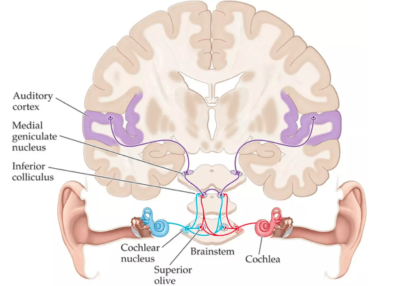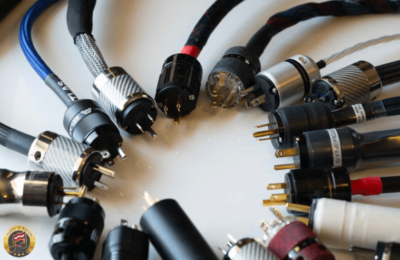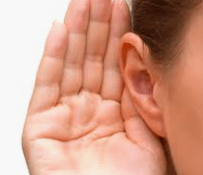
Cable Information
Many people have ears that lie flat against the sides of the head and do not realise what they are missing in terms of audio information. To receive all of the data, the person has to put their hand behind the ear. And, acts as a deflector to bounce the sounds into the ear. And, can be a bit uncomfortable at first but has to be done to hear all of the music, which is the upper mid frequencies.

Many people who listen to music are utterly unaware of these problems, and this is why there are many debates concerning the validity of audio cables and does it make a difference. I am sure you can understand the problem that is facing the person. It is always the case when something is negative; then people will discuss and share and add their input. But, when something sounds good, then people do not share this in the same way because that is the way we are – we all love to moan and complain!
How is your health? Audio cable Information

You see, there are just so many factors in the workings of the human ears. Even a bang on the head can cause swelling inside the skull, affecting the vital components required to efficiently transmit the incoming sound waves to the correct electrical impulses. These are necessary for both ears to work correctly!
The purpose of a cable
- Transfer the signal with as little loss or degradation as possible
- Conduct electrical energy with small loss and interference as possible
- To interface between the components giving a good impedance match
There are five parts to the construction of a cable.
- The type of wire used
- Size or gauge of the wire used
- The dielectric or the insulation around the wire
- Shielding around the wire – to reject EMI and RFI
- The connector used when connected to the wire
The weakest link
A chain is only as good as the weakest link. And, a cable regarded as the last item in the chain. And, is because of a lack of education when it comes to audio cables. But, in reality, should be treated as the first item because a cable can make a real difference!
What do you want
- Smooth, open, and dynamic sounding
- An even timber from top to bottom
- A broad and deep soundstage
- Easy focus on a specific instrument in its own space
- Macro and microdynamics
- Low-level details in attacks and decays
- A rich and warm sound
- Involvement and movement in the presentation
What you do not want
- Noise with the music
- Interferences from components
- Musical harshness
- A grainy or sterile sound
- Music to sound analytical and Fatiguing
Room Acoustics
- Fit acoustic panelling where necessary
- Fit curtains to cover reflective surfaces
- Minimise all reflective objects
- Remove objects from in front of the loudspeakers
The audio system
First, we have to transmit the sound from the source which can be ~
- Turntable
- A/V player
- Media player
- Computer
- The internet
The source is connected, via a cable to the next item in the line. And, can be a Phono-stage, DAC, or Pre-amplifier. After this, another cable is necessary to connect to the Integrated amplifier or power amplifier. And, from the amplifier, a pair of cables are required to take the signal to the loudspeakers.
Where to start
The first place to start is with the components because every component needs power. And, the first step should be to fit a decent power cable to each element. The interconnect cables are equally essential and chosen to match the power cables. There is also the option of selecting RCA Interconnect cables or XLR (balanced) interconnect cables. But, again find the cable to match the system.
The Loudspeakers cables play an essential part in the system and designed to transmit the musical information as accurately as possible. The cables then were chosen to match the power cable and interconnect cables. And, now you have a choice. You can use ‘Separate’ speaker cables (Two per speaker) ‘Bi-wired’ speaker cables (One set) per speaker or ‘Standard’ speaker cables (One set) per speaker.
System set up
If you take a photograph and the camera is not in focus, the image is blurred and unacceptable. In the same manner, when an audio system is not adjusted correctly, it is out of focus. And it will not sound as good as it should. Audio cable Information
- Remove static from the components using an anti-static spray.
- De-gauss’ (internal cleaning) using frequency sweep CDs
- Alignment of power cables – check polarity.
- Re-arrange cables. Clean connections and terminations.
- Focus the loudspeakers to the listening position by sitting and looking at one speaker. And, tow it in, until it is looking directly back at you.
- Do the same with the other loudspeaker, and so you have ‘focussed’ your speakers.
Cable listening
Do you know what you are listening for?
- Have you been shown by a sound professional?
- Have you had a listening experience?
When listening to an audio cable, certain things become necessary for you to be aware of and do before listening to cables. And, please ensure you are free from any hearing deficiencies or sickness.
Cable Quality

The purity of a cable is essential, and the cables have to be free from Oxygen and particles that affect the information passing through the cable. The cables supplied with a specification sheet but, do not get carried away with this information. Because it is the way a cable’s constructed allows the performance revealed.
There many cable shoots-outs and reviews you can find by going to online magazines. But, what you read, please understand that it does not necessarily apply to you because you have different sensitivity and additional hearing. The only way for you to hear what a cable is capable of is to listen in your listening room. If you know of a reputable audio dealer, then borrow a set of cables from him, take them home and spend a week listening!
Cable cost
A cable can cost from 100 USD to 10,000 USD, and just how different can the sound be? Again, many things have to be taken into account as it depends on the system. There is no point in spending 1000 USD on a power cable with a 100 USD amplifier. But, if the amplifier costs 5,000 USD then yes, you can undoubtedly use the power cable. As I said, A system is only as good as the weakest link. And that is why when you are considering an audio system or upgrading your audio system; please seek professional help!
If you have enjoyed ‘Audio cable information’ please share – thank you
Perkune – Best budget Audiophile Cables
 Do you know what you are listening for?
Do you know what you are listening for?